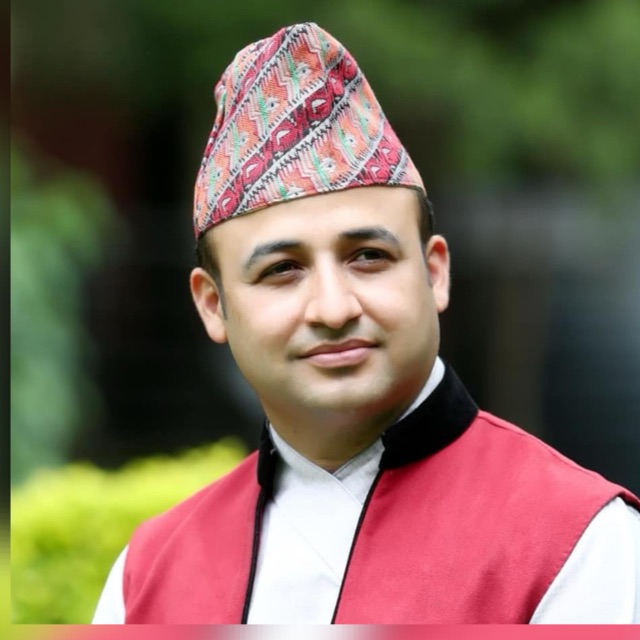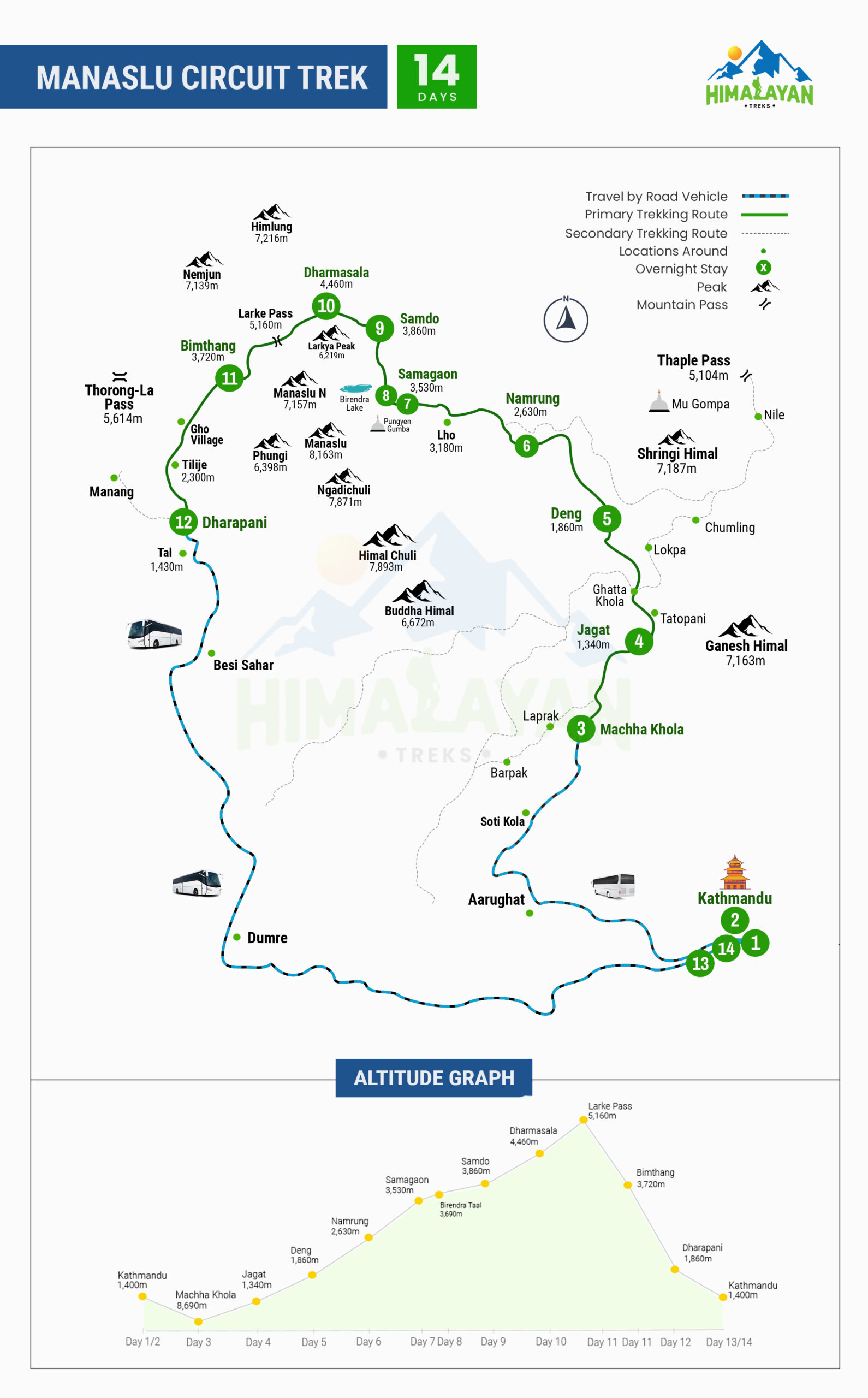Manaslu Circuit Trek – 14 Days Cost & Itinerary
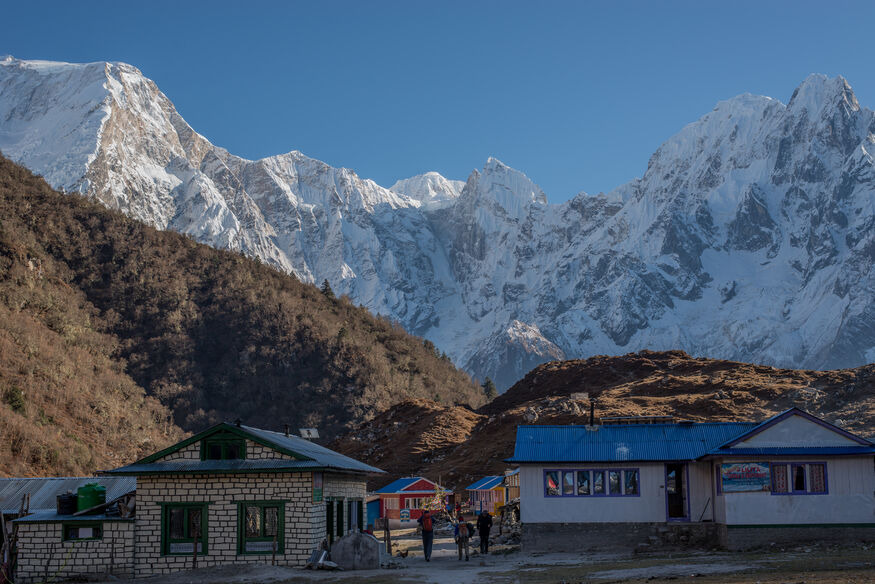
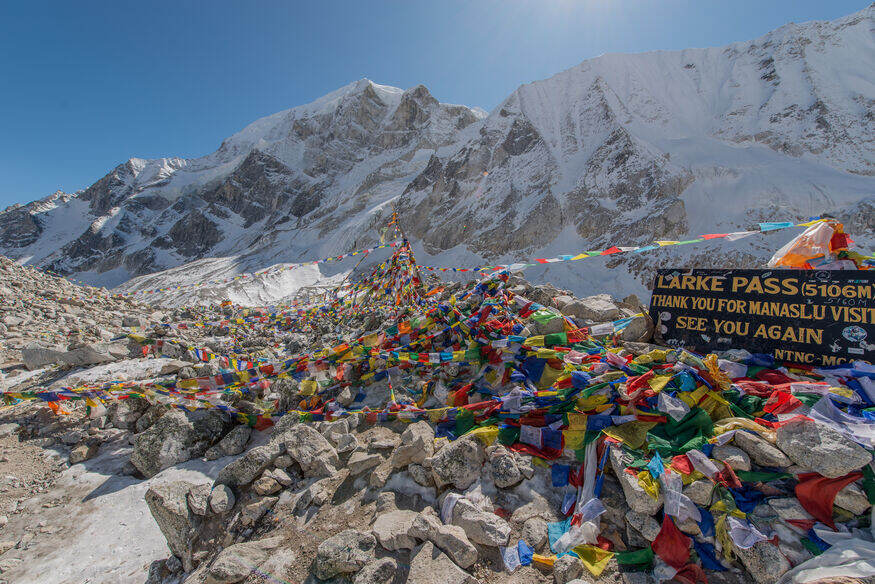
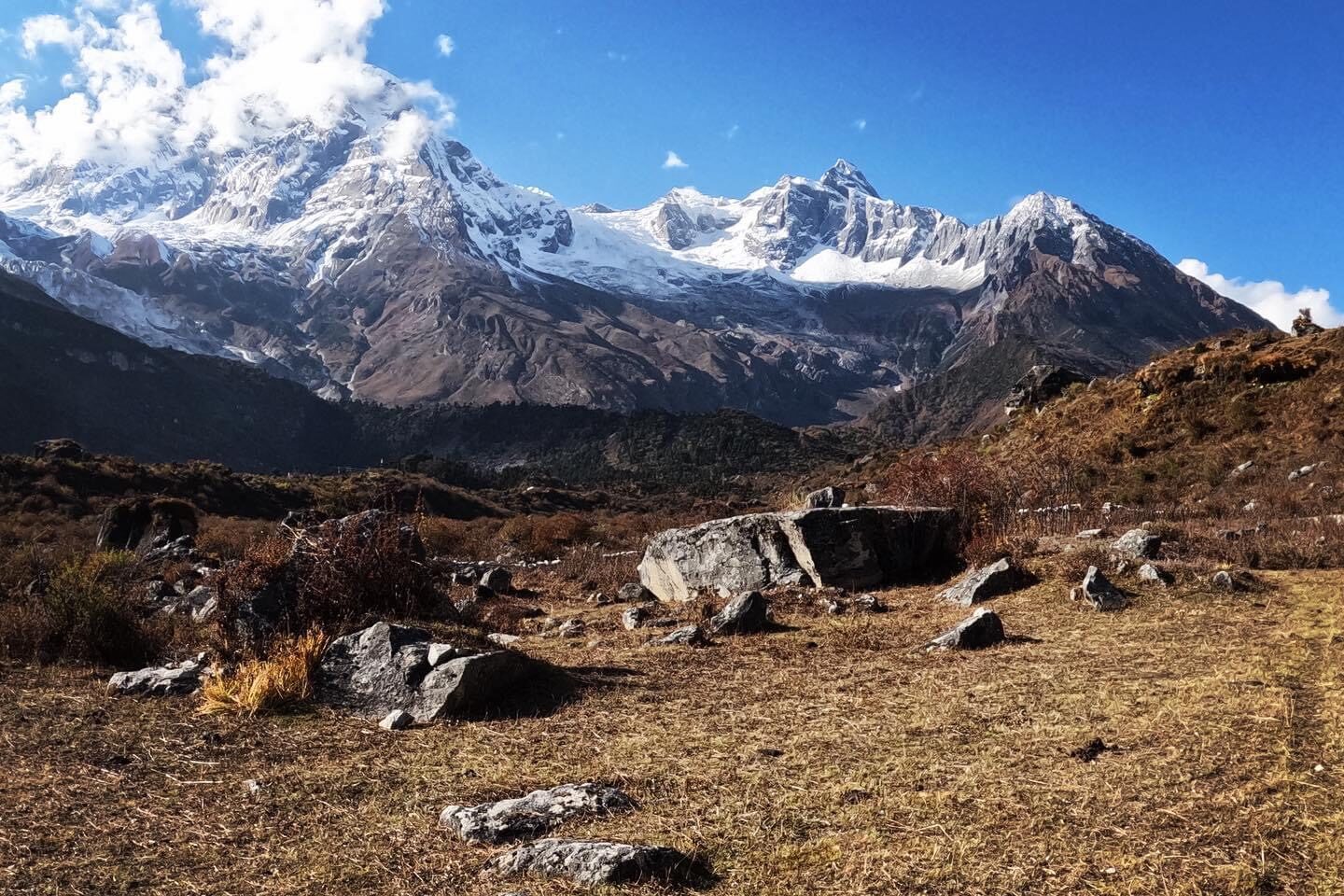
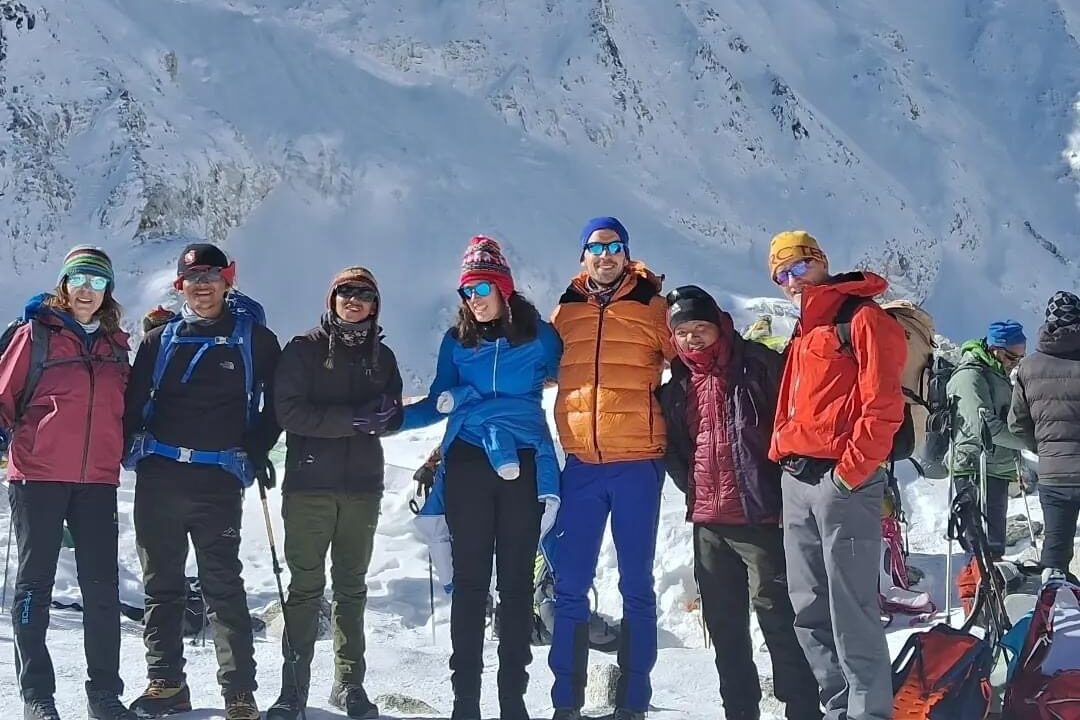
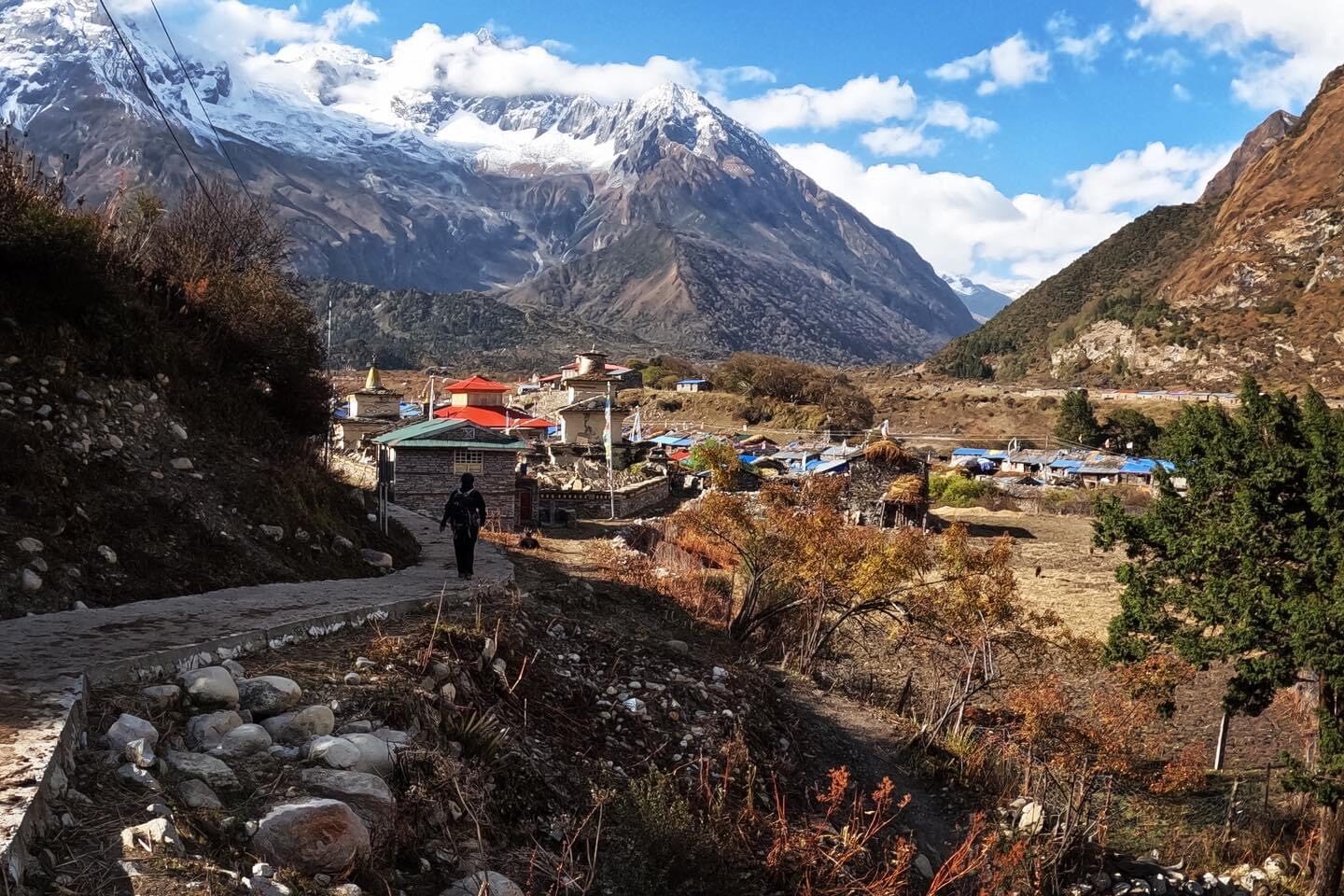
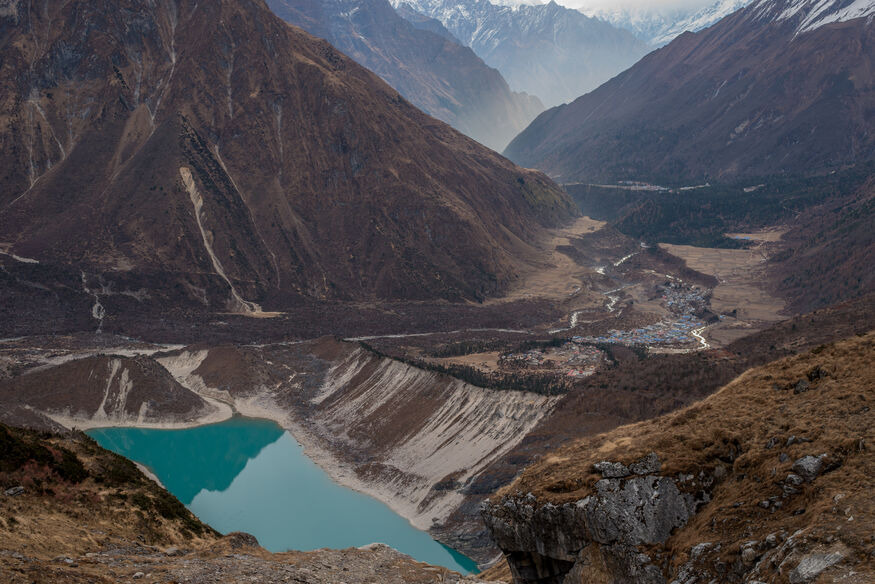
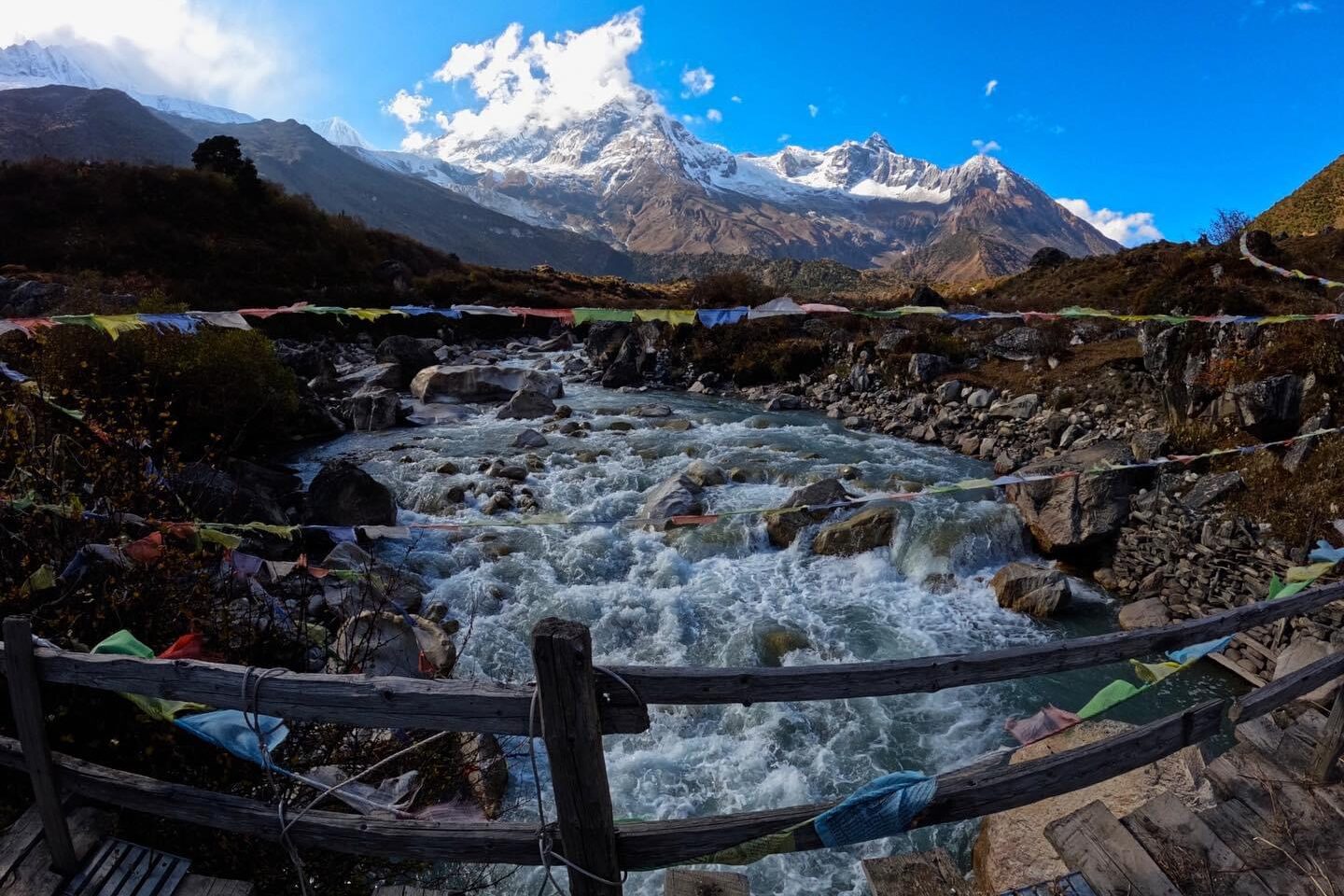
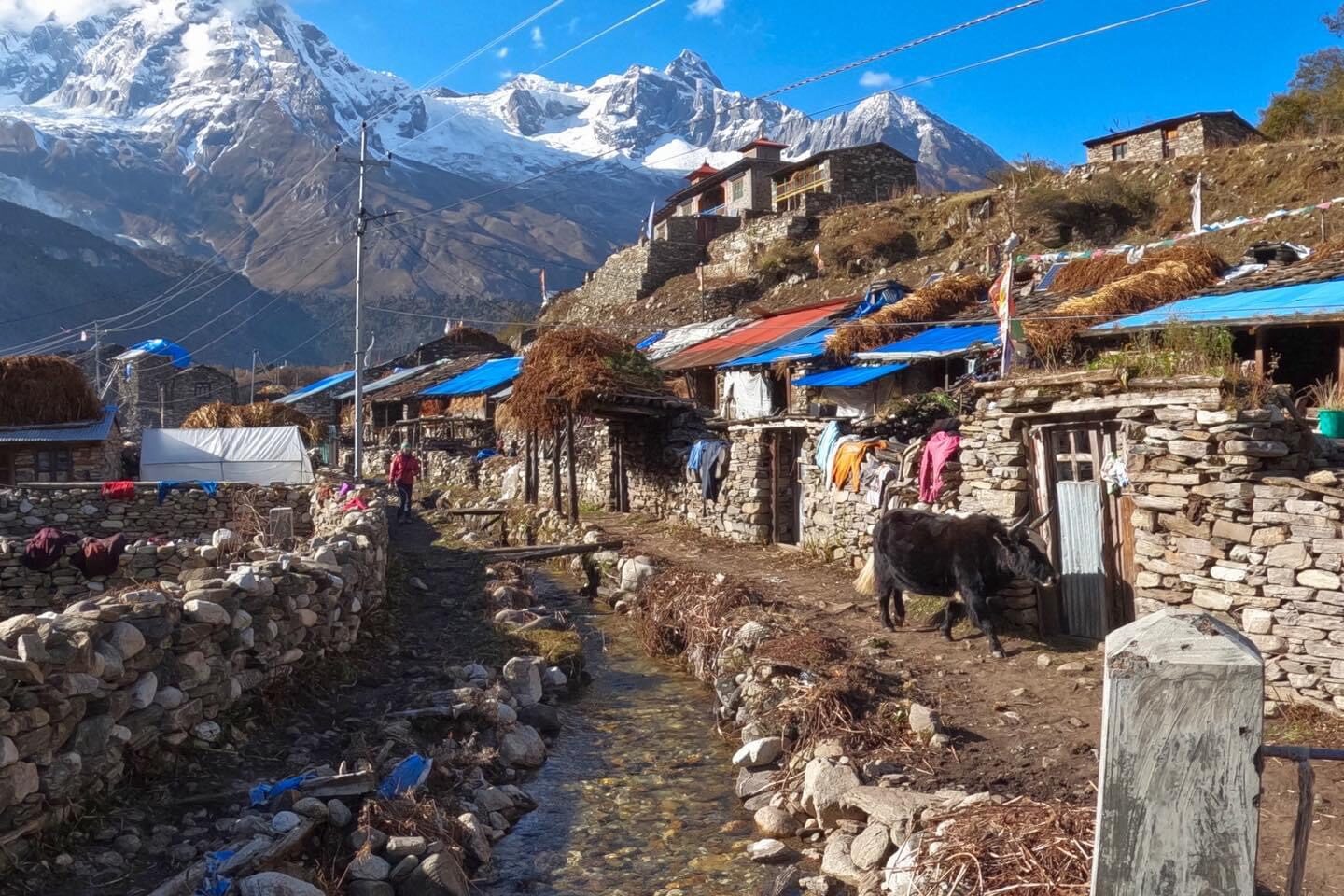
Good To Know
-
Country Nepal
-
Duration 14 Days
-
Destination Manaslu Region
-
Routes Kathmandu- Larkya La Pass- Besisahar
-
Max. Altitude 5160m
-
Activity Trekking
-
Meals Includes Lunch, Dinner, Breakfast (*)
-
Accommodation Hotels/ Teahouses
-
Best Season Feb- May/ Sept-Nov
-
Difficulty Difficult
-
Start / End trip Kathmandu
Trip Introduction
The Manaslu Circuit Trek is in the middle of the Nepalese Himalayas and is famous for its beautiful mountain ranges, lively culture, and difficult trekking trails. With an elevation of 8,163 meters (26,781 feet), Mount Manaslu is the eighth-highest mountain peak in the world. Himalchuli, Ngadi Chuli, Shringi Himal, and Ganesh Himal are just a few dramatic peaks surrounding it. These huge trees make a stunning background for the area’s varied scenery and rich culture.
The Manaslu area has many different kinds of culture. Different groups of people live in each village, including the Gurungs, Magars, Tamangs, and Sherpas. Each village has its own rituals and customs. Traditional Tibetan Buddhism is a big part of everyday life, as you can see by all the temples, prayer flags, and stupas. Throughout the year, festivals and religious events show off the area’s rich spiritual history.
The unique mix of cultures and high elevation in the Manaslu area can be seen in its food. Trekkers and locals alike can eat hearty meals like dal bhat (rice and beans), momos (dumplings), thukpa (noodle soup), and tsampa (roasted barley flour). Traditional meals are made more flavorful and healthier with foods grown or gathered nearby, like yak meat, dairy products, and wild herbs. This makes for a satisfying dining experience in the mountains.
People who live in the Manaslu area enjoy a good mix of old and new ways of life. People who live in villages have a simple but satisfying way of life. They make a living by farming, raising animals, and trading along old trade lines. Residents with strong ties to their town and the land feel strong and independent, protecting cultural heritage for future generations.
In the middle of the Manaslu region is the famous Manaslu Circuit trek, an adventure that draws trekkers worldwide. This trek takes about 14 to 18 days and goes through remote towns, lush forests, alpine meadows, and high mountain passes. The most exciting parts are crossing the dangerous Larkya La Pass (5,160 meters), visiting traditional towns like Samagaon and Samdo, and taking in the views of Manaslu Circuit Trekking and the nearby peaks.
The Manaslu Circuit is more than just a trekking route. It’s an immersive cultural experience that lets trekkers connect with locals and see how friendly they are. By trekking in the Manaslu region, explorers not only push their bodies and minds to the limit but also help the local economy and conservation efforts, which will protect this pristine Himalayan gem for future generations.
Short Itinerary
Day 01: Arrival in Kathmandu and Start of the Manaslu Circuit Trek in Nepal.
Day 02: Explore the Kathmandu Valley and Get Ready for the Trek.
Day 03: Kathmandu to Machakhola (869m).
Day 04: Trek to Jagat (1290 m,) from Machha Khola.
Day 05: Trek from Jagat to Dyang (1860 m).
Day 06: Trek to Namrung( 2660 m,) from Dyang.
Day 07: Trek from Namrung to Samagaon (3530 m,).
Day 08: Get used to the Altitude in Samagoan (Visit Manaslu Camp or Pungyen Gompa).
Day 09: Trek from Sanagaon to Samdo (3800 m).
Day 10: Trek to Dharmasala (4460 m) from Samdo.
Day 11: Trek from Dharmasala to Bimthang (3890 m) through Larkya Pass.
Day 12: Trek from Bimthang to Gho Village (2560 m)& trek to Dharapani (1860 m) from Gho Village.
Day 13: Drive back to Kathmandu (1400 m) from Dharapani.
Day 14: Departure to Kathmandu Airport.
Highlights of the Manaslu Trek in Nepal
- Take in the amazing views of Manaslu, the world’s eighth-tallest mountain, and other beautiful peaks and landscapes.
- In traditional villages, you can learn about the rich traditions of the Gurung and Tibetan people and experience their warm welcome and unique customs.
- Enjoy a less busy trek, and gives you a chance to connect with nature that hasn’t changed.
- Learn how to get over high passes like the Larkya La Pass.
- Explore a range of environments, from subtropical forests to alpine meadows, where you can see a wide range of plant and animal life.
- Learn about the Buddhist customs and architecture of the area by visiting old monasteries like Sama Gompa.
- In tea houses and homestays, you can enjoy the kindness of the locals and get to know them better.
- You will trek through various scenery, from terraced fields to glacial moraines, which will keep you interested.
- Discover remote towns like Deng and Namrung that give you a look into real Himalayan life.
- Manaslu Circuit Trek is socially and environmentally conscious because it supports responsible travel that helps the local economy and has little effect on the environment.
Beautiful Views of Mountains
Trekking the Manaslu Circuit gives you the best views of Mount Manaslu, the eighth tallest mountain in the world, and Himalchuli, Ngadi Chuli, Shringi Himal, and Ganesh Himal. Throughout the trip, these huge mountains make for a breathtaking view.
Remote and Untouched Landscapes
The Manaslu Circuit is not as famous as other trekking routes in Nepal, so it has much-untouched nature. Trekkers pass through various landscapes, such as dense woods, terraced fields, alpine meadows, and rough mountain passes. These different landscapes give trekkers a sense of peace and solitude.
Crossing the Larkya La Pass
Crossing the Larkya La Pass, at an elevation of 5,160 meters (16,930 feet), is one of the trip’s hardest and most rewarding parts. The pass is memorable because it offers great views of snow-covered hills and glacier-covered valleys.
Immersion in Culture
The trail passes through traditional towns where local groups like the Gurungs, Magars, Tamangs, and Sherpas live. Trekkers can talk to locals, learn about their unique cultures and traditions, and get a feel for the traditional way of life in the Himalayas. Cultural immersion is a significant aspect of trekking in Nepal and adds a rich dimension to the Manaslu Circuit Trek experience.
Exploring Buddhist Temples
Trekkers will encounter old Buddhist temples, gompas, and shortens. These places are important spiritual hubs for the local people. These holy places offer a glimpse into Tibetan Buddhist culture and a chance to relax and think in the middle of the rough landscape.
Wildlife Viewing
The trek passes through the Manaslu Conservation Area, which is home to a wide range of plants and animals. Trekkers may see rare animals in the Himalayas, such as snow leopards, Himalayan tahrs, blue sheep, and birds, making the trip more exciting.
Charming Villages and Teahouses
During the trip, trekkers stay in simple teahouses and guesthouses in traditional Himalayan villages. These cozy places offer a friendly welcome, hearty meals, and a chance to meet other trekkers and locals. These interactions create memories of friendship and kindness that will last a lifetime, enhancing the overall trekking experience in Nepal on the Manaslu Circuit Trek.
Less Crowded Alternative to Everest Base Camp
The Manaslu Circuit is a quieter and more remote trekking route that still showcases the beauty of the Himalayas. It is a less popular alternative to routes like the Everest Base Camp trip.
Best Time to Trek Manaslu Circuit
In Nepal’s beautiful scenery, the Manaslu Circuit Trek takes you on a deep journey through the heart of the Himalayas. Even though the trek can be done any time of the year, September through November and March through May are the best times to go.
In the fall, the weather is stable for trekkers, with clear skies and moderate temperatures, making the experience easy and fun. The paths are usually dry, making getting through the rough terrain easy. Also, the views of the tall Himalayan peaks, like the magnificent Mount Manaslu, are at their most stunning at this time, giving trekkers experiences they will never forget.
Rhododendrons bloom along the hiking trail in the spring, waking up the scenery with bright colors. They paint the area with splashes of color. As the weather gets warmer and the snow melts, the trails become easier to access, making it easy for treks to cross high mountain passes. Additionally, the longer daylight hours in the spring give people plenty of time to enjoy the natural beauty and peace of the Himalayan mountains.
Fall and spring are the best times to do the Manaslu Circuit Trek in Nepal, but trekkers should always check the weather predictions and trail conditions before starting their trip to ensure they stay safe and have a good time. If they plan and prepare well, adventurers can go on an unforgettable trek through the stunning landscapes of the Manaslu area. They can make memories that will last a lifetime in the majesty of the Himalayas.
Experience the Manaslu Treks in Nepal – 14 Days
Embarking on the Manaslu Circuit Trek for 14 days promises a plethora of unforgettable adventures and encounters:
- Breathtaking Scenery: Witness awe-inspiring Himalayan panoramas, including the majestic Mount Manaslu, Himalchuli, Ganesh Himal, and other snow-capped peaks.
- Cultural Immersion: Immerse yourself in Nepal’s rich cultural tapestry by engaging with locals from Gurung, Tamang, and Tibetan communities, delving into their traditions, customs, and daily lives.
- Conquering Challenging Passes: Experience the thrill of high-altitude trekking by conquering the daunting Larkya La Pass (5,160 meters/16,924 feet), reveling in panoramic vistas from the summit.
- Spiritual Exploration: Along the trail, visit ancient Buddhist monasteries and gompas, such as Mu Gompa, to meditate, learn about Tibetan Buddhism, and witness traditional rituals.
- Wildlife Encounters: Spot rare Himalayan wildlife, including the elusive snow leopard, red panda, blue sheep, Himalayan tahr, and various bird species, enhancing the trekking experience.
- Diverse Landscapes: Trek through diverse landscapes, from lush green valleys and terraced fields to alpine meadows and rugged mountain terrain, offering ever-changing scenery and countless photo opportunities.
- Indulging in Local Cuisine: Delight in authentic Nepalese cuisine and local delicacies at teahouses and guesthouses along the trail, savoring the flavors of dal bhat, momos, thukpa, Tibetan bread, and more.
- Experiencing Community Hospitality: Feel the warmth of Nepali villagers as you stay in traditional teahouses and homestays, swapping stories and forming connections with locals and fellow trekkers.
- Embracing the Physical Challenge: Test your endurance and fitness levels as you navigate varying altitudes and terrain, surmount obstacles, and achieve personal milestones.
- Reveling in a Sense of Accomplishment: Reach the culmination of your trek in Besisahar, basking in a profound sense of accomplishment and fulfillment as you reflect on the challenges overcome. The memories made during your Manaslu Circuit adventure.
No. of Pax |
Cost (per person) |
1 Pax |
$ 1800 |
2 Pax |
$ 1200 |
3-5 Pax |
$ 1100 |
6-10 Pax |
$ 1000 |
11-16 Pax |
$ 800 |
Itinerary
The exciting part of your trip starts when you land at Tribhuvan International Airport in Kathmandu, 1334 meters above sea level. As soon as you leave the plane, you’ll feel the fresh mountain air and the lively atmosphere.
After quickly clearing customs and getting your things, a friendly agent from The Himalayan Trek greets you. They help you through the airport with a friendly smile and make sure you have a smooth ride to your hotel.
Once you’re in your Kathmandu hotel, take some time to relax and get used to the higher air. If you get to Kathmandu early, take advantage of the time to trek around the busy streets, where old temples sit next to new shops and markets.
You will meet with your trekking guide later that same night for a full briefing on the upcoming journey. You will go over the itinerary, discuss important trekking details, answer any questions, and address any worries you may have. It’s a great chance to meet other trekkers and get ready for the trip ahead.
As night falls, enjoy a delicious dinner that showcases the complex tastes and spices of Nepalese food. Take your time with each bite because tomorrow, you’ll start an unforgettable trek through Nepal’s stunning Manaslu area.
-
Duration 30 Min
-
Altitude 1400m
-
Accommodation 3* Hotel
It’s a mix of learning about the culture and getting ready for the trek today as you explore the Kathmandu Valley’s rich history and culture. After a hearty breakfast at your hotel, you will go on a tour with a guide of Kathmandu’s famous UNESCO World Heritage Sites.
The holy Swayambhunath Stupa, also known as the “Monkey Temple,” is your first stop. It is perched on a hill with a view of Kathmandu. Enjoy stunning views of the valley below while taking in the beautiful building adorned with bright prayer flags and intricate carvings.
Next, go to the holy Pashupatinath Temple, which is a major Hindu pilgrimage place where people come to worship Lord Shiva. Along the banks of the Bagmati River, where Hindu cremations take place in an emotionally charged atmosphere, you can experience the deep rituals of life and death.
As you continue your spiritual trip, you should see the beautiful Boudhanath Stupa, one of Nepal’s biggest stupas and the most important place in Tibetan Buddhism. Trek around the stupa with other religious people, spin prayer wheels and pray for peace and understanding.
After spending some time in these holy places, return to Kathmandu for a leisurely lunch and some free time to look around the busy streets and markets. Take advantage of this chance to get any last-minute trekking gear or gifts.
Meet your trekking partners in the afternoon for a final lecture and gear check with your guide. Review the trek’s schedule and safety rules in-depth, and ensure you have everything you need for the trip.
Treat yourself to a delicious dinner at a local restaurant as the day ends. Enjoy the flavors of authentic Nepalese food while you think about the interesting people you met and the exciting journey that awaits you tomorrow. Then, return to your hotel for a good night’s sleep while you look forward to the morning trek to Manaslu Circuit Trek.
-
Duration 6-7 Hrs
-
Altitude 1400m
-
Meals Breakfast
-
Accommodation 3* Hotel
Tomorrow starts early in Kathmandu as you start an exciting trip to Machakhola, a peaceful village on the banks of the Buri Gandaki River.
Leaving the noise of cities behind, the path winds through beautiful landscapes with terraced fields, small towns, and lush woods. Along the way, you will see views of traditional Nepalese life and beautiful natural scenery.
Your journey will take several hours, but when you get to Machakhola, the peaceful riverbank and friendly people will greet you.
As soon as you arrive, check into your lodging and take a moment to relax and enjoy the peace and quiet. You could trek along the riverbank or admire the architecture of the traditional houses as you walk around the town.
Enjoy a delicious meal in the evening, made with fresh products from the area and featuring Nepalese flavors. As night falls, return to your lodging to rest and prepare for the exciting days of trekking to Manaslu Circuit.
-
Duration 8-9 Hrs
-
Altitude 869m
-
Meals Lunch, Dinner,Breakfast
-
Accommodation Teahouse
The trail from Machha Khola to Jagat takes you through rhododendron and pine woods, making the trip feel like a magical botanical adventure. The trip takes about 6 to 7 hours and goes up and down about 400 meters. It goes through a variety of landscapes and through forests where the ground is covered in complex patterns of light.
Rich moss grows on old rocks, and the sound of running water can be heard with every step. As you climb, the air gradually gets thinner, giving you a fresh, energizing feeling. At the same time, the view gets bigger, showing you snow-capped hills rising out of the clear blue sky. Finally, Jagat, a beautiful Gurung village set in terraced fields, greets you with open arms and dishes of steaming yak butter tea, marking the end of this rewarding yet difficult Himalayan journey.
-
Duration 6-7 Hrs
-
Altitude 1290m
-
Meals Lunch, Dinner, Breakfast
-
Accommodation Teahouse
As the journey moves from Jagat to higher elevations, it passes through many cute agricultural hamlets near Sidibas Bazaar. The picturesque town is one of these settlements that stands out. It is here that people take a short break. After that, there is a short climb, then a drop across a suspension bridge that leads to Nagjet. As the trip continues, a climb is made to Philim, a large village with many spread-out farmsteads. As the trek goes from Philim, it goes through terraced landscapes with golden fields of wheat and barley. After that, the path goes up a rocky hill and ends at the entrance to a bamboo forest. The day’s Manaslu Circuit Trek route ends with a night’s stay in Dyang town.
-
Duration 6-7 Hrs
-
Altitude 1860m
-
Meals Lunch, Dinner, Breakfast
-
Accommodation Teahouse
The trek from Dyang to Namrung takes 6-7 hours and goes up more than 1,000 meters. It is a classic Himalayan trip. The trail leads past rhododendron forests, waterfalls, and cute towns with stone houses.
It also passes snow-capped peaks and lush pastures with yaks in them. Teahouses along the way provide warmth and yak butter tea, which brings trekkers together to share their journey stories. When you reach Namrung, which is surrounded by tall mountains, you feel like you’ve really done something amazing. The trip was so beautiful, and you know there will be more Himalayan magic ahead.
-
Duration 6-7 Hrs
-
Altitude 2660m
-
Meals Lunch, Dinner, Breakfast
-
Accommodation Teahouse
After going up from Lo Goan, there is a clear rise in elevation and a much cooler temperature. After going through the tree line, the trail goes through an area with short juniper bushes and willow trees. As you trek slowly along a clear path, you can see peaks covered in snow in all directions. Samagaon is the last stop on this journey. It is a big mountain village on the way to Manaslu Base Camp and Larkya-la Pass, which connects to the path that goes to Tibet.
-
Duration 7-8 Hrs
-
Altitude 3530m
-
Meals Lunch, Dinner, Breakfast
-
Accommodation Teahouse
On the seventh day in Samagoan, which is in the Manaslu range, getting used to the altitude is the most important thing. As you trek through the peaceful Manaslu Camp or the hundreds-year-old Pungyen Gompa, you are taking a trip into the heart of the Himalayas. Take deep breaths of the cool mountain air, enjoy the wide views, and let the peace of the town fill your heart. Enjoy the peace of a day that fits in with nature’s grandeur as the sun goes down behind snow-capped hills. This day of getting used to the altitude is more than just a physical necessity; it becomes a mental immersion that gets you ready for the amazing things that are to come on your Manaslu trek.
-
Duration 5-6 Hrs
-
Altitude 4700m
-
Meals Lunch, Dinner, Breakfast
-
Accommodation Teahouse
Today, you will start a 4- to 5-hour trek that will take you to the last town, Samdo, which is close to the border with Tibet. Before you reach the Lakrya La Pass, Samdo is the biggest, most beautiful, and highest town. Here, you can learn about the local traditions, culture, and beliefs and also visit the monastery while taking in the beautiful views of the Manaslu Himalayas. Notably, Samdo is close to the border with Tibet, which means it can get many Chinese things.
-
Duration 4-5 Hrs
-
Altitude 3880m
-
Meals Lunch, Dinner, Breakfast
-
Accommodation Teahouse
The schedule for the second-to-last day of the trek includes a short trip to either Larkya Phedi or Dharmasala, after a nice break at Samdo village. Crossing an icy stream is part of the path, which then goes through a dry, empty area. The day’s trek isn’t particularly difficult, but there is a quick rise in elevation and a number of short climbs and descents that lead to Larkya Phedi, which means the base of the hill or pass. In the afternoon, you have some free time, so you could go for a short trek.
-
Duration 4-5 Hrs
-
Altitude 4460m
-
Meals Lunch, Dinner, Breakfast
-
Accommodation Teahouse
On the tenth day of our expedition, the brisk morning set the stage for the daunting Larkya Pass crossing. Leaving Dharmasala behind, our boots crunched on the snow-dusted trail, revealing a surreal moonscape as we ascended. Glimpses of turquoise glacial lakes and encounters with weathered yak herders punctuated the arduous climb. Cresting the 5,136-meter Larkya Pass, a breathtaking panorama unfolded. The descent to Bimthang, with its scree slopes and switchbacks, led to the welcoming embrace of the quaint village nestled in the glacial valley. As the sun dipped behind snow-capped peaks, a yak dung fire and steaming tea awaited, offering solace after an exhausting yet exhilarating day. Drifting into sleep, the wind whispered tales of our epic journey across the formidable Larkya Pass.
-
Duration 8-9 Hrs
-
Altitude 5136m
-
Meals Lunch, Dinner, Breakfast
-
Accommodation Teahouse
Following a challenging traverse of the Larkya-La pass, today’s itinerary promises a more leisurely descent towards Gho. Situated within a wooded setting, the route from Bimthang meanders through unspoiled woodlands adorned with rhododendron, pine, and oak trees. The journey encompasses the passage through numerous agricultural structures before arriving at the tranquil destination of Gho. The trek from Gho becomes notably more manageable when traversing the downward incline, leading predominantly towards the Manang region, culminating at Telje village along the Marysangdi River. Dharapani, a substantial settlement replete with commendable lodgings, stands prominently on the Annapurna Circuit trekking trail. The Manaslu circuit trekking trail seamlessly intertwines with the globally renowned Annapurna circuit trail. Should one possess a surplus of time, an extension towards the Annapurna circuit is a viable option after successfully traversing the Larkya La pass. Dharapani, distinguished for its scenic allure, is the culminating destination for the final day amidst the mountainous terrain.
-
Duration 6-7 Hrs
-
Altitude 1860m
-
Meals Lunch, Dinner, Breakfast
-
Accommodation Teahouse
The return trip to Kathmandu, descending from 1400 meters, unfolds like a tapestry of sunlit valleys and winding rivers. The roads cut into ochre cliffs, passing through quaint villages adorned with fluttering prayer flags. Each bend offers breathtaking views of snow-capped peaks against the turquoise sky, giving way to verdant canyons echoing with unseen streams. As time goes on, the serene mountain symphony gives way to a patchwork of fields and bustling towns. Finally, Kathmandu’s skyline appears on the horizon, a jagged silhouette against the golden dusk, welcoming you back to the lively embrace of the valley.
-
Duration 8-9 Hrs
-
Altitude 1400m
-
Meals Lunch, Dinner, Breakfast
-
Accommodation 3* Hotel
The origin of the Manaslu Trek marks the beginning of an delight adventure through the Himalayas. As trekkers gather in anticipation, the journey unfolds through remote villages, lush forests, and high mountain passes, offering stunning views of the towering peaks, including the majestic Manaslu. Beyond a physical expedition, it becomes a spiritual and cultural exploration, immersing trekkers in the unique traditions and warm hospitality of local communities. With each step, new challenges and rewards emerge, creating enduring memories that make the departure a symbolic gateway to an unforgettable Himalayan experience.
-
Duration 30min
-
Altitude 1400m
-
Meals Breakfast
Inclusions
What’s Included
- Upon your arrival at the airport in Kathmandu, a representative from the trekking company will greet you and ensure your safe transfer to your hotel.
- You will be provided with comfortable accommodation in a 3-star hotel in Kathmandu for two nights, along with complimentary breakfast.
- Meals including lunch, dinner, and breakfast will be provided throughout the trekking journey, ensuring you’re fueled and energized for the adventure ahead.
- The necessary permits for entry into the Manaslu, (MCAP), Special permit, Annapurna(ACAP) and the TIMS Permit will be arranged for you, allowing legal access to the trekking route.
- Additionally, any special permits required for specific areas or regions along the trekking route will also be arranged on your behalf.
- All relevant paperwork, including permits and documentation required for the trek, will be taken care of by the trekking company, ensuring a hassle-free experience.
- You will receive a company T-shirt as part of the trekking package, serving as a memento of your adventure in the Himalayas.
- A duffle bag will be provided for your convenience during the trek, and you can return it after the trek’s completion.
- Accommodations during the trek will be arranged in twin-sharing rooms in lodges or tea houses along the route, ensuring comfortable and convenient stays.
- Before embarking on the trek, you’ll enjoy a comprehensive sightseeing tour of the Kathmandu Valley, exploring its cultural and historical landmarks with an experienced tour guide.
- Private transportation by jeep (Scorpio) will be arranged for your travel from Kathmandu to Machakhola and Besisahar, ensuring a comfortable and efficient journey.
- Local jeep transportation will be provided for your journey from Dharapani to Besisahar, facilitating smooth transitions between trekking points.
- You will be accompanied by an experienced guide and porter during the trek, who will provide guidance, assistance, and support throughout the journey. (1 Porter for 2 clients)
- Necessary arrangements for travel and rescue services, in case of emergencies or unforeseen circumstances during the trek, will be made to ensure your safety and well-being.
- A well-equipped medical kit, including essential first aid supplies, will be carried during the trek to address any minor medical issues or emergencies that may arise.
- The trek concludes with a memorable farewell dinner at an authentic Nepalese restaurant, where you’ll indulge in local cuisine and enjoy a cultural performance, reflecting on the experiences of your journey.
What’s Excluded
- While you can easily obtain a Nepal Visa upon arrival at Kathmandu airport, the fee for the visa is not included in the trek package. The visa fee may vary depending on the duration of your stay in Nepal.
- The cost of international flights to and from Kathmandu is not included in the trek package. You’ll need to arrange and cover the expenses for your flights separately.
- Any entrance fees to cultural sites, temples, or monuments visited during your sightseeing tour in Kathmandu are not included in the package and will be at your own expense.
- If you require additional nights of hotel accommodation in Kathmandu due to early arrival, late departure, or any other reasons not included in the scheduled itinerary, the cost of these extra nights will be your responsibility.
- While breakfast is included during your stay in Kathmandu, the cost of lunch and dinner is not covered in the package. You’ll need to cover these expenses for meals in Kathmandu, including any additional meals required due to early return from the mountain.
- It’s essential to have travel and rescue insurance that covers trekking activities in Nepal. This insurance is not included in the package, and you’ll need to arrange it independently.
- Expenses such as phone calls, laundry, bar bills, battery recharge, extra porters, bottled or boiled water, hot showers, and any other personal items or services not specified in the package are not covered and will be your responsibility.
- While tipping is discretionary, it’s customary to show appreciation for the services of your guide and porter with a tip at the end of the trek. The tip amount is not included in the package and should be budgeted separately based on your satisfaction with the services provided.
Check Availability & Private Trip
Pick Your Suitable Date
Book a Private Trip
Private & Group Discount Price
- 1 Pax US$ 1800
- 2 Pax US$ 1200
- 3-5 Pax US$ 1100
- 6-10 Pax US$ 1000
- 11-16 Pax US$ 800
Add-Ons
Upgrade Your Accommodation in Kathmandu
If you’re seeking a more luxurious stay in Kathmandu, we offer the option to upgrade your hotel accommodation. By upgrading, you can enjoy enhanced amenities and comfort during your stay. The cost of upgrading hotels in Kathmandu is USD 120 per night, which includes breakfast and taxes for two people.
To ensure your preferences are met, kindly inform us in advance, and we’ll make the necessary arrangements for your upgraded accommodation. Treat yourself to a more enjoyable and indulgent experience in Kathmandu with our upgraded hotel options.
Essential Info
Manaslu Circuit Trek Route Map
The trekking route begins in Arughat, Soti Khola, or Macha Khola, following the Budhi Gandaki Valley upstream, passing through picturesque villages like Jagat, Deng, and Namrung, before culminating in Besisahar.
Difficulties and Preparations
Challenges include altitude gains, unpredictable weather, varied trail conditions, and remote areas with limited facilities. Proper acclimatization, physical fitness, and obtaining necessary permits are essential for a safe and enjoyable trek.
Permits
Trekkers require a Manaslu Restricted Area Permit and a Manaslu Conservation Area Permit, obtained through registered trekking agencies or government offices.
Off-Beaten Trail
The Manaslu Circuit Trek is renowned as an off-beaten restricted trekking trail, offering solitude, cultural authenticity, and pristine natural beauty away from mainstream routes.
Manaslu Circuit Trek Best Time
Autumn (September to November) and spring (March to May) are the recommended seasons, offering stable weather, clear skies, and vibrant landscapes.
Guide Requirement
Hiring a licensed guide is mandatory for safety and cultural immersion, providing expertise, logistical support, and emergency assistance.
Alternative Routes
Trekking options like Tsum Valley, Manaslu Base Camp, Ganesh Himal, Ruby Valley, and Langtang Valley offer diverse experiences around the Manaslu region.
Customized Itineraries
Tailoring itineraries involves considering trek duration, route preferences, cultural experiences, and seasonal factors to optimize the trekking experience.
Off-Season Trekking
Off-season trekking during the monsoon presents challenges like rain, muddy trails, and limited facilities, but also offers opportunities for solitude, lush landscapes, cultural immersion, and lower costs.
Manaslu Trek Packing List
A comprehensive packing list includes clothing for varying weather conditions, trekking gear, hydration and nutrition supplies, personal hygiene and first-aid items, essential documents, and optional gear for comfort and convenience.
Things to Consider During Manaslu Circuit Trekking
Getting Ready Physically
To safely and enjoyably travel the varied Himalayan landscapes on the Manaslu Circuit trek, you need to build up your endurance and strength. As this is a moderate to difficult trek, trekkers should focus on building up their stamina to handle the long days and gradual elevation gain.
Building leg strength with movements like squats and lunges before the uphill and downhill stretches is important. A strong core also helps you balance while trekking on rough ground. Adding active stretches to your workout routine can help you maintain the flexibility you need to overcome rocky terrain.
Aerobic activities, like running or cycling, make you fitter overall and prepare you to work hard for long periods of time. Training can also help you get your body used to higher elevations, making trekking at elevation easier if possible.
Mental preparation is just as important because the days are long, and the weather can change quickly. Building mental toughness through visualization, mindfulness techniques, and a positive attitude is very important.
It is very important to live a healthy life before the trip. To be fully prepared, drink enough water, eat a healthy, nutrient-dense diet, and talk to a medical professional beforehand.
Lastly, training with a backpack that looks and feels like the one you’ll be carrying on the trek helps your body get used to carrying more weight and gives you more energy for the trip.
Trekkers who take a thorough approach to getting physically ready can fully enjoy the beauty and challenges of the Manaslu Circuit trek.
Getting Your Mind Ready
Preparing for the Manaslu Circuit trek with Himalayan Adventure requires more than physical fitness. You also need to have mental toughness to deal with any problems that come up along the way.
Visualizing Success
Before you go on the trek, picture yourself successfully finishing it. Imagine being sure of yourself as you trek along the trails, taking in the beautiful views and noticing your progress every step. This positive imagery will make you feel good about yourself and give you drive.
Connecting with Nature and Practicing Mindfulness
Trekking in the Himalayas is a great way to get close to nature and practice mindfulness. Accept the present moment and let your surroundings’ sights, sounds, and feelings envelop you. Mindfulness can help you feel less stressed, focus better, and find inner peace, especially when things are hard.
Staying Flexible
Flexibility is important when trekking in mountainous areas because you need to change your plans quickly when weather or roadblocks occur. Keep an open mind and be ready to change your plans if necessary. Take on challenges with a problem-solving mindset and consider other choices when necessary.
Building Confidence
If you want to feel more confident in your ability to finish the Manaslu Circuit trek, think about the things you’ve done well in the past and how you overcame problems. Know your strengths, skills, and how to deal with tough situations. Bring along helpful people like other trekkers, guides, and Himalayan Adventure staff to help and support you on your trip.
Getting Ready for Hardship
Trekking in the Himalayas is very fulfilling but can also be hard on your body and mind. Prepare mentally for the pain, tiredness, or uncertainty that might come up during the trip. For resilience, keeping a positive mood, taking care of yourself, and drawing on your inner strength when things get tough are important.
Himalayan excitement’s preparation for the Manaslu Circuit trek makes people mentally tough and ready for the trip so that they can start it with confidence, positivity, and excitement.
Essential Equipment
Clothing
Base Layers: long-sleeve shirts, thermal tops, and bottoms made from moisture-wicking fabric.
Mid-Layers: Opt for a fleece jacket or down jacket for insulation.
Outer Shell: Bring a waterproof and windproof jacket and pants for protection against the elements.
Trekking Pants: Consider convertible pants for versatility and hiking shorts or lightweight pants for lower altitudes. Trekking Shirts: Pack quick-drying long-sleeve and short-sleeve shirts.
Headwear: For cold weather, remember to wear a warm hat or beanie and a sun hat or cap for sun protection.
Hand Protection: Carry lightweight gloves or mittens. Footwear: Wear hiking socks (preferably wool or synthetic blend), moisture-wicking and breathable underwear, and trekking boots or sturdy hiking shoes with ankle support.
Camp Comfort: Include camp shoes or sandals for relaxation in teahouses.
Gear and equipment
Backpack: Choose a 30-40 liter pack for day treks or 50-70 liters for trekking with porter support.
Sleeping Gear: Ensure your sleeping bag is rated for temperatures between 0°F and -10°F (-18°C to -23°C), and bring a sleeping pad or inflatable mattress for comfort and insulation.
Trekking Accessories: Carry poles for stability, a headlamp or flashlight with spare batteries, sunglasses with UV protection, and a trekking map and guidebook. Organization: Use waterproof dry bags or stuff sacks to keep gear organized, and pack a lightweight travel towel. Tools: Bring a multi-tool or pocket knife, a whistle, and a signaling mirror.
Documents: Keep personal identification, permits, and travel documents in a waterproof pouch.
Hydration and Nutrition
Water: Carry water bottles or a hydration reservoir with a 2-3 liter capacity, and consider water purification tablets or a filter.
Snacks: Pack high-energy snacks like nuts, trail mix, and energy bars, along with electrolyte replacement tablets or powder.
Optional: Bring an insulated thermos for hot drinks.
Personal Hygiene and First Aid
Toiletries: Include basic toiletries such as a toothbrush, toothpaste, biodegradable soap, and shampoo, as well as hand sanitizer or antibacterial wipes.
Sanitation: Don’t forget toilet paper and a small trowel or shovel for waste disposal.
Medication: Carry personal medications and prescriptions, along with a first-aid kit containing bandages, antiseptic cream, blister pads, and pain relievers.
Protection: Remember sunscreen with high SPF, lip balm with SPF, insect repellent, and anti-itch cream.
Vision: Pack prescription glasses or contact lenses with extra pairs if needed.
Miscellaneous
Electronics: Bring a camera or smartphone to capture memories and a portable or solar charger for electronics.
Entertainment: Consider packing a lightweight book or e-reader for entertainment.
Finances: Ensure you have cash in Nepalese rupees for purchases and tips.
Safety: After consulting with a healthcare professional, if necessary, bring a portable oxygen canister or altitude sickness medication, along with a travel insurance policy and emergency contact information.
Optional Items
Gaiters: Consider bringing gaiters for muddy or snowy conditions.
Cooking Gear: If self-catering, pack a portable camp stove and cookware.
Daypack: Bring a lightweight daypack for side trips or day treks.
Comfort: Consider a travel pillow or compression sack for extra comfort.
Hygiene: For longer treks, a portable solar shower can be handy.
FAQs
You can not completely avoid getting altitude sickness, but there are things you can do to make it less likely. Some of these are getting used to the altitude slowly, treking at a comfortable speed, drinking plenty of water, hiking to higher elevations but sleeping at lower ones, and eating healthy meals. More tips on how to lower your risk of altitude sickness will be given by our guides.
You will need both a Conservation Area Permit and a Manaslu Special Permit. You will also need an Annapurna Conservation Area Permit (ACAP). For your peace of mind, Discovery World Trekking will help you with all the paperwork you need.
The area has a wide range of temperatures and weather conditions throughout the year. The coolest month is January, when it gets as cold as -10°C at night and -5°C during the day. In February, the weather is milder and more humid. During the day, it is about 15°C, and at night, it is 8. In March, lakes that were frozen over thaw and buds start to grow. The bright rhododendrons bloom in April, and May is the warmest month, with highs of 18°C. In June, the temperature ranges from 25°C to 10°C and it rains a lot. With temperatures ranging from 22°C to 8°C, July is the wettest month. In August, the monsoon makes the trails slippery, but the grass is very green. The weather is nice in September, and October is a great month for hiking. November brings colder, drier conditions, while December is the driest month, with temperatures ranging from 12°C to -8°C.
As it turns out, the company does make sure that vegetarian trekrs have enough healthy and clean vegetarian food. To make sure that our clients' dietary needs are met, we carefully pick out the best lodges and teahouses.
Yes, you can rent trekking gear in Nepal, and we can help you find good shops in Kathmandu that do this.
Most tea houses and lodges offer Wi-Fi during your stay, and most of the time, there is no charge.
If you are allergic to some medicines, you should talk to your doctor and make sure you have enough medicines on hand. You can easily and cheaply get most medicines in Kathmandu.
The guided Manaslu Circuit trek in Nepal is relatively straightforward, without the need for ropes or ice picks. However, it is still classified as challenging.
Our guided Manaslu Trek operates from February through June and from August to December.
The Manaslu Circuit presents a demanding journey, reaching heights of 5,160m at Larkya La Pass. Yet, with adequate preparation and good physical condition, completing this trek is feasible.
Yes, it's compulsory, and it should include helicopter evacuation coverage up to the trek's highest altitude and medical expenses, as there are no sufficient medical facilities in the trekking area.
Traveler Reviews
